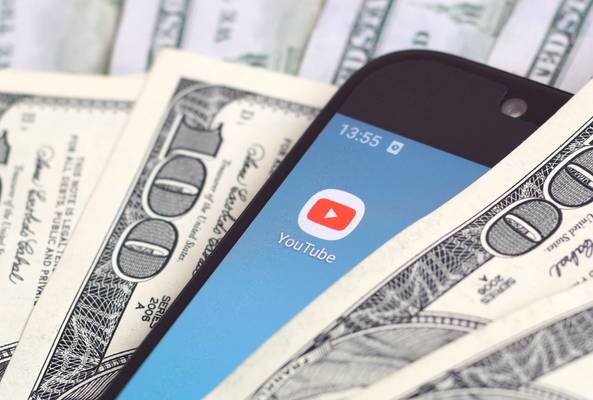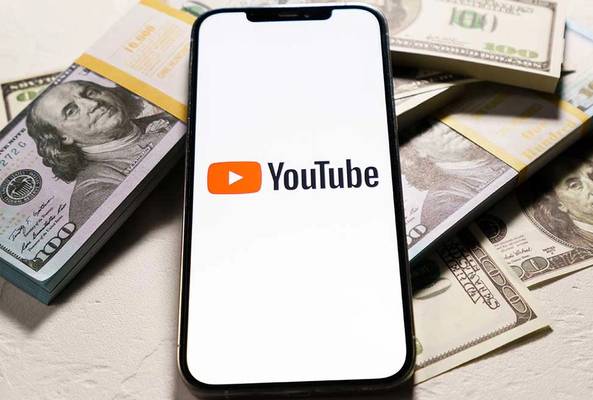Lydia Sweatt is a writer who loves balancing her article/blog time indoors with a healthy dose of nature. She bikes, hikes, and identifies edible plants along the way.
YouTube Will Run Ads On Some Unmonetized Channels, But Those Creators Won't Benefit

YouTube just updated its terms of service, particularly the policies around the YouTube Partner Program, channel monetization, and advertising. On November 18, the platform announced it would start placing ads on videos from non-monetized channels.
In the updated terms of service document, YouTube describes this as its ‘right to monetize’. Here’s an excerpt from the platform’s official announcement:
“Starting today we’ll begin slowly rolling out ads on a limited number of videos from channels not in the YouTube Partner Program. This means as a creator that’s not in YPP, you may see ads on some of your videos. Since you’re not currently in YPP, you won’t receive a share of the revenue from these ads, though you’ll still have the opportunity to apply for YPP as you normally would once you meet the eligibility requirements. You can always check your progress toward eligibility on the monetization tab in YouTube Studio.”
As soon as we heard the news, we filmed a video expressing our thoughts and what this update means for creators. To best prepare for YouTube’s new monetization strategy, give it a watch below:
Despite YouTube’s shocking update, we don't think the platform is going to plaster ads all over the place. Instead, YouTube said it would place ads on a limited number of videos. If history is any indication of a typical YouTube test, perhaps 5-10% of the platform’s content will be affected.
Nevertheless, YouTube updating its terms of service is significant. If the test goes well, we may see 100% of content monetized on the platform.
That’s just a guess, though, and a far-reaching one at that. For today, here’s what every creator needs to know about the update.
The YouTube Balance of Power
YouTube’s ecosystem has three major stakeholders - those who create content, those who watch that content, and those who want to sell things to viewers by paying for advertising space on creators' content.
Every time YouTube makes a change to its platform, policies, or service, that balance begins to shift.
By rolling out ads on non-monetized channels, this latest update shifts more power to YouTube's advertisers. They’ll have a wider selection of channels to choose from when it comes to ad placements - all while annoying users with more ads and infuriating creators who won’t get any of the ad revenue.
Advertisers will make more money, but the stakeholder that stands to earn the most is YouTube. More ads will be shown to viewers, and the platform will likely keep 100% of the revenue.
We aren’t business development experts or economists, so we’re absorbing this news as the average creator would. And to us, it feels like YouTube is making an assertive, legacy-building cash grab.
The Pros and Cons of YouTube’s Monetization Update
YouTube typically shares advertising revenue with its creators, so some of them may be dreading the platform’s new direction. However, there's a silver lining in any challenge, and here are two of the biggest:
- There’s a conspiracy theory that monetized videos are more discoverable on YouTube. If you believe in that, then hey - maybe you’ll get more views and reach the YPP requirements faster.
- On a serious note, watching YouTube monetize your content is validating. If one of your videos gets selected, maybe you’d have a decent shot at being accepted to YPP in the future.
And here are the negatives…
- YouTube gives creators a platform of 2 billion users to grow their channels and make money from their content. That used to happen for free but not anymore. Like it or not, YouTube may use your content to make money at your expense.
- For creators who are already monetized, the pitfalls are steep. If advertisers have more options of where to place their ads, they could choose any video - and not yours. For example, if a smaller creator attracts potential customers better, they may receive the ads you’d normally get. But the creator won't earn any revenue, so of course, YouTube wins again.
Who Controls the Ads On YouTube?
Beyond the pros and cons, YouTube’s monetization update raises an important question: Who is controlling the ads on YouTube?
If YouTube decides to place ads on your videos, and you can't monetize them, can you even agree to what type of ads appear on your content?
When a creator enters the YPP, they gain the power to restrict certain ads from their channel - things like alcohol consumption or gambling. Or, they can decide they don’t want ads appearing on their content at all.
For creators who aren’t monetized, we can only imagine they don’t have the same level of control under this new update, and that feels...wrong.
So, What Happens Now?
First, we should face the basic facts about YouTube’s new update:
- There may be more advertisements on YouTube videos in the future. However, viewers are already accustomed to this and will probably keep watching their favorite creators.
- YouTube is going to profit from your content, even if you aren’t allowed to monetize it.
But consider this: As an unmonetized channel, you weren't going to earn money from those videos anyway.
We have to remember that YouTube is still rented real estate on the Internet. The platform has the right to do whatever it wants, and we can decide whether or not we want to log into the app each day.
The most important thing to remember is this: You still have the potential to start a YouTube channel, upload a video, and reach potentially billions of users. No matter how the ads are distributed, that’s not going to change any time soon.



